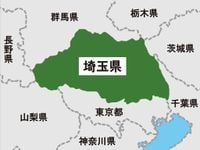On May 6, 2025, Kuki City in Saitama Prefecture faced a significant power outage affecting approximately 1,270 homes across ten districts. The outage began at around 7:21 AM, according to Tokyo Electric Power Grid, and by 7:49 AM, the number of affected homes had expanded, causing concern among residents.
The impacted areas included Kawara-dai, Kita-Hiroshima, and several neighborhoods within Minami-Kurihashi, specifically Minami-Kurihashi 3-chome, 4-chome, 6-chome, 8-chome, 9-chome, 10-chome, 11-chome, and 12-chome. The situation was compounded by the proximity of the Tobu Railway's Minami-Kurihashi Station, which raised questions about public safety and transportation disruptions.
As the morning progressed, the situation evolved. By 8:39 AM, reports indicated that approximately 540 homes in five of the affected areas were still without power. These areas included Kawara-dai and three neighborhoods in Minami-Kurihashi. Residents were left wondering when normalcy would return.
Fortunately, the power outage was resolved by 9:19 AM, just under two hours after it began. The cause of the outage was attributed to a car crashing into a utility pole, which resulted in the pole breaking. In a precautionary measure to ensure public safety, power was shut off in the vicinity.
This incident highlights the vulnerabilities of urban infrastructure and the potential for accidents to disrupt essential services. While the power restoration was timely, it serves as a reminder for local authorities to evaluate safety protocols and infrastructure resilience.
Residents of Kuki City expressed relief at the swift restoration of power but also voiced concerns about the underlying issues that could lead to such incidents in the future. "It’s unsettling to think how quickly things can change," one local resident noted. "We rely on power for everything, and when it’s gone, it really disrupts our lives."
As Kuki City moves forward, the focus will likely shift to ensuring that such accidents are mitigated in the future, and that the community remains prepared for any similar incidents. The quick response from Tokyo Electric Power Grid and local emergency services was commendable, but the city must continue to bolster its infrastructure against unforeseen events.
In conclusion, while the power outage in Kuki City was resolved quickly, it raises important questions about infrastructure safety and public preparedness in the face of unexpected challenges. The community's experience serves as a valuable lesson for other regions facing similar risks.




